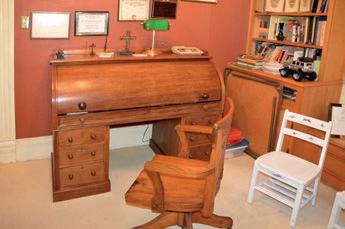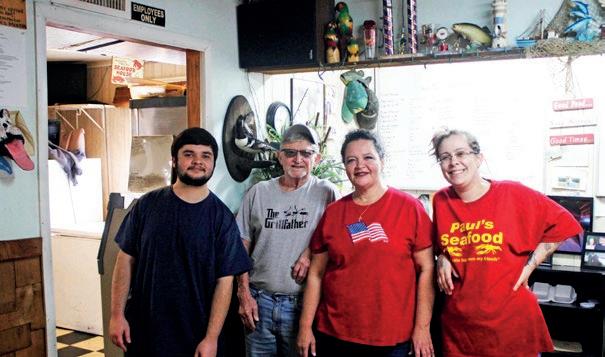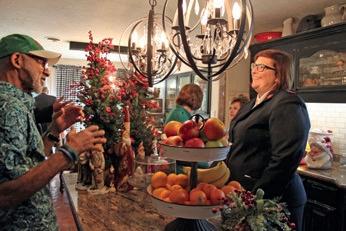
3 minute read
HOME
INSIDE THE NEYLAND-GILMER HOUSE Councilmember Mary McKenna gives a tour of her historic home
By Dawn Burleigh • Photos by Dawn Burleigh
AA pink house in the historic district stands out among others. Known as the Neyland-Gilmer House according to a historical marker, it is the place City of Orange Councilmember Mary McKenna calls home.
The exact construction of the original house has not been found, according to a program from the dedication of the marker. Presumedly, Albert and Louisa Neyland built it after their marriage on May 20, 1875. Alexander Gilmer purchased the home on July 30, 1877.
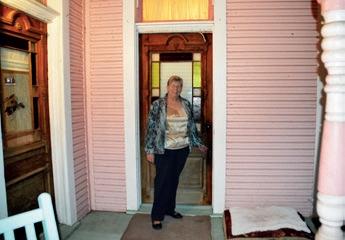
Gilmer owned several sawmills in Texas and other states. He was also one of the most influential citizens in this part of Texas.
Gilmer, during the Civil War, owned several vessels, ran the blockade several times and was on the G.H. Bell in the battle of Sabine Pass.
The United States Navy blockaded the Texas coast beginning in the summer of 1861, while Confederates fortified the major ports. Union interest in Texas and other parts of the Confederacy west of the Mississippi River resulted primarily from the need for cotton by northern textile mills and concern about French intervention in the Mexican civil war, according to Texas State Historical Association.
Each room of the house is constructed to have ventilation from three side and roof gable is decorative, distinct and different in its decoration.
The original floor is preserved in the library and is three inch wide pine flooring.
“Notice the bullseye decorations used in the door way,” McKenna pointed out at the corners of the trim work around the doors. “In the hallway you can see the wainscoating.” Wainscoating is wooden paneling that lines the lower part of the walls of a room. In McKenna’s home, it is has a distinctive pattern of the Victorian area.
McKenna’s parents bought the house in 1975.
“The dining room is the oldest part of the house,” McKenna said. “They added the square nails.”
Throughout the home, you can see the decorating touches of both mother and daughter.
“Mother collected clocks,” McKenna said. “I collect crosses.”
One clock is a reproduction of one found in the Louvre, also known as the Louvre Museum, is the world’s largest art museum and a historic monument in Paris, France.
The clock now graces a mantel which McKenna’s mother had built.
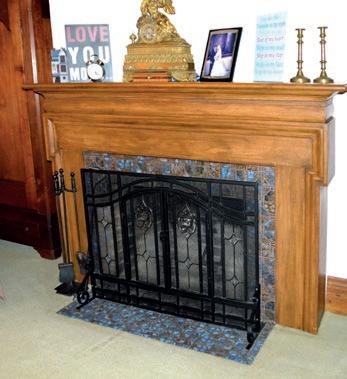
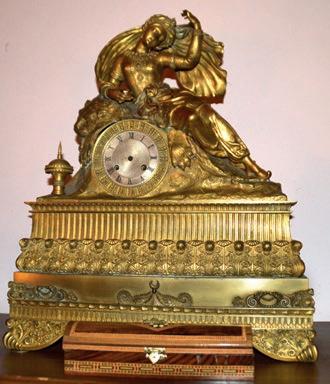
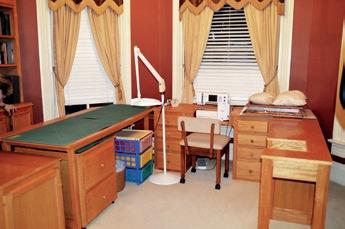
“She found it in a barn and had it built,” McKenna said. “The brass clock belonged to a great aunt in Dad’s family. It is a model of a clock in the Louvre.”
During a tour of her home, McKenna points out pictures her great grandmother painted which are framed and hanging on the wall.
“Notice there are no nails in doors,” McKenna said. “They are pegged.”
While the home is not the one McKenna grew up in, there are many memories in the place she calls home.
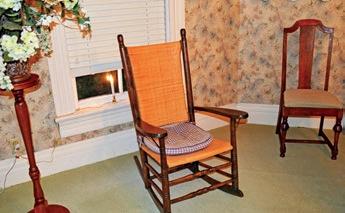
“In 1975, Mom wanted a house to match the antiques she collected,” McKenna said. “I moved back here after getting my Masters in 1979 to help get the hospice started.”
McKenna describes her home as ‘a nice old house that is warm and feels friendly.’
“There are lots of good memories over the years as the family adds spouses and babies,” McKenna said.
